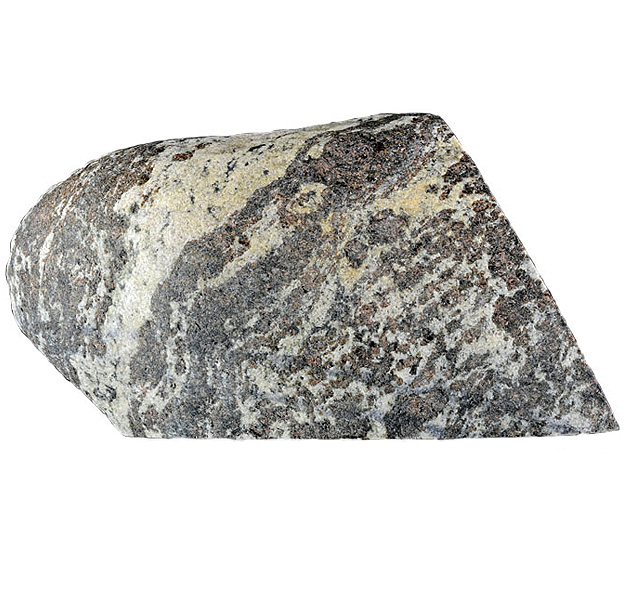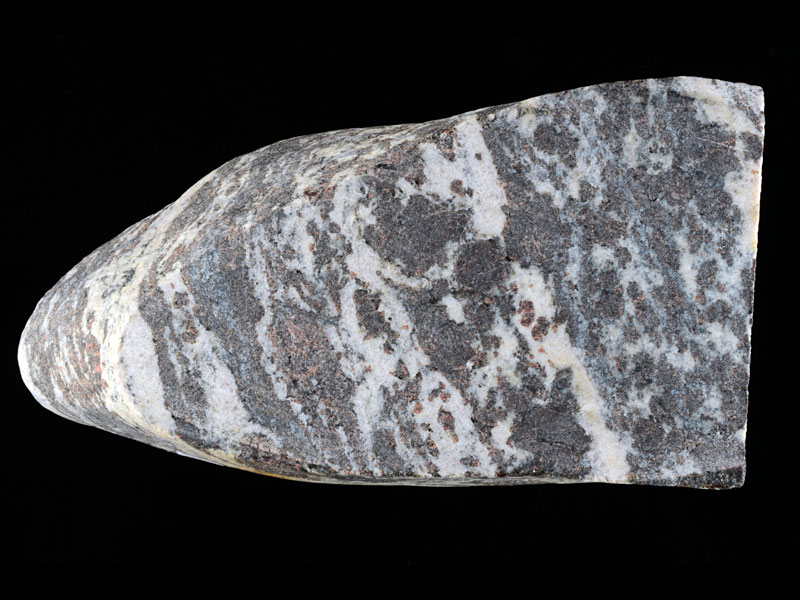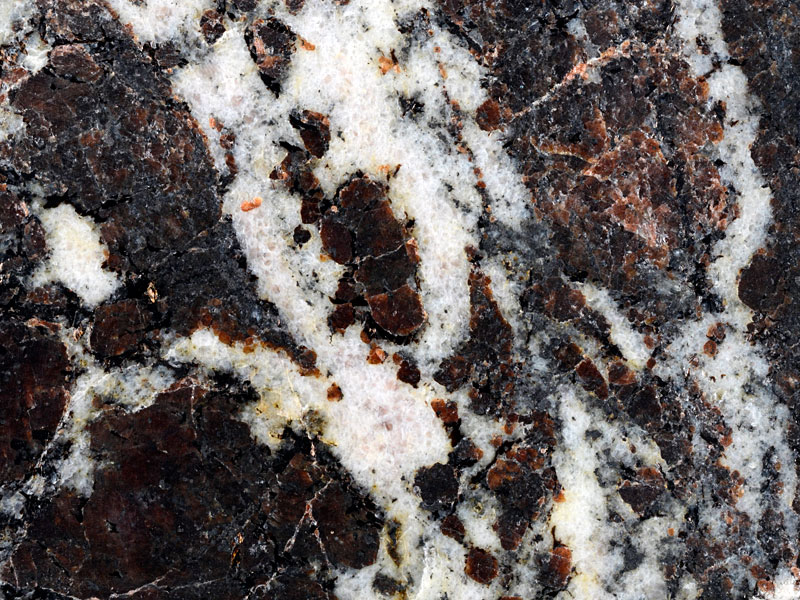
Fact sheet
This coarse-grained, Lewisian metamorphosed granite comes from Rodel on South Harris in the Western Isles of Scotland. The rock probably originated as a siltstone sediment in the Archean, but was metamorphosed when it was subjected to temperatures in excess of 800°C during the Laxfordian orogeny in the Proterozoic period.
In thin section the coarse-grained texture is dominated by two types of layer. The first layer type is composed of garnet (slightly lower relief and isotropic) and coarse-grained sillimanite (slightly lower relief and medium birefringence colours). The remainder of the rock is a finer-grained matrix of quartz, biotite and feldspars. The garnet was highly cracked by deformation and pressure changes as the rock returned to the Earth’s surface.
The United Kingdom Virtual Microscope (UKVM) collection consists of igneous, sedimentary and metamorphic rocks from around the UK.
It is intended as a teaching resource, helping to tell the story of the common rock types and how they form, and reflecting the history of the UK at the margins of the continent of Europe. The collection is a series of teaching sets, for example igneous rocks from the North Atlantic Igneous Province and SW England; high-temperature metamorphic rocks from Scotland and low-temperature metamorphic rocks from Wales; and sedimentary rocks, including English limestones and sandstones.







